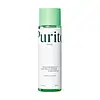What's inside
What's inside
 Key Ingredients
Key Ingredients

 Benefits
Benefits

 Concerns
Concerns

No concerns
 Ingredients Side-by-side
Ingredients Side-by-side

Water
Skin ConditioningLactobacillus Ferment
Skin ConditioningPropanediol
SolventAloe Barbadensis Leaf Extract
EmollientPersea Gratissima Oil
Skin ConditioningCucumis Sativus Fruit Water
Skin ConditioningCamellia Sinensis Leaf Extract
AntimicrobialRaphanus Sativus Sprout Extract
AntioxidantLens Culinaris Seed Extract
AntimicrobialVaccinium Macrocarpon Fruit Extract
AstringentMadecassoside
AntioxidantTocopheryl Acetate
AntioxidantAscorbyl Glucoside
AntioxidantSodium Anisate
AntimicrobialSodium Levulinate
Skin ConditioningSodium Hyaluronate
HumectantHydrogenated Vegetable Oil
EmollientSodium Gluconate
Skin ConditioningSqualane
EmollientPhospholipids
Skin ConditioningGlycerin
HumectantRosa Centifolia Flower Extract
AstringentPolyglyceryl-10 Laurate
Skin ConditioningCitric Acid
BufferingPentylene Glycol
Skin ConditioningArginine
MaskingWater, Lactobacillus Ferment, Propanediol, Aloe Barbadensis Leaf Extract, Persea Gratissima Oil, Cucumis Sativus Fruit Water, Camellia Sinensis Leaf Extract, Raphanus Sativus Sprout Extract, Lens Culinaris Seed Extract, Vaccinium Macrocarpon Fruit Extract, Madecassoside, Tocopheryl Acetate, Ascorbyl Glucoside, Sodium Anisate, Sodium Levulinate, Sodium Hyaluronate, Hydrogenated Vegetable Oil, Sodium Gluconate, Squalane, Phospholipids, Glycerin, Rosa Centifolia Flower Extract, Polyglyceryl-10 Laurate, Citric Acid, Pentylene Glycol, Arginine
Water
Skin ConditioningButylene Glycol
HumectantPentylene Glycol
Skin ConditioningDipropylene Glycol
Humectant1,2-Hexanediol
Skin ConditioningCentella Asiatica Extract
CleansingSodium Hyaluronate
HumectantPanthenol
Skin ConditioningMadecassoside
AntioxidantAsiaticoside
AntioxidantMadecassic Acid
Skin ConditioningAsiatic Acid
Skin ConditioningTrehalose
HumectantCarbomer
Emulsion StabilisingAllantoin
Skin ConditioningArginine
MaskingEthylhexylglycerin
Skin ConditioningDisodium EDTA
Portulaca Oleracea Extract
Skin Conditioning
 Reviews
Reviews

Ingredients Explained
These ingredients are found in both products.
Ingredients higher up in an ingredient list are typically present in a larger amount.
Arginine is an amino acid that is important for human development. Your body uses is it to produce hair keratin and skin collagen.
As a cosmetic ingredient, Arginine has antioxidant properties and can also help repair damaged skin. This ingredient is derived either synthetically or from animals.
Arginine isn't fungal acne safe when used in the presence of other lipids (fats, fatty acids, oils, esters, etc). Oils and fats occur naturally within the skin, so take caution when using Arginine if you're prone to fungal acne.
Learn more about ArginineMadecassoside comes from the super popular skin-soothing ingredient, Centella asiatica. It is one of four active compounds found in the extract of Centella Asiatica.
Madecassoside has antioxidant, anti-inflammatory, and hydrating properties. It contains fatty acids, amino acids, beta-carotene, and phytochemicals.
One study found using Madecassoside with ascorbic acid helped reduce the signs of aging and improved skin hydration.
Learn more about MadecassosidePentylene glycol is typically used within a product to thicken it. It also adds a smooth, soft, and moisturizing feel to the product. It is naturally found in plants such as sugar beets.
The hydrophilic trait of Pentylene Glycol makes it a humectant. As a humectant, Pentylene Glycol helps draw moisture from the air to your skin. This can help keep your skin hydrated.
This property also makes Pentylene Glycol a great texture enhancer. It can also help thicken or stabilize a product.
Pentylene Glycol also acts as a mild preservative and helps to keep a product microbe-free.
Some people may experience mild eye and skin irritation from Pentylene Glycol. We always recommend speaking with a professional about using this ingredient in your routine.
Pentylene Glycol has a low molecular weight and is part of the 1,2-glycol family.
Learn more about Pentylene GlycolSodium Hyaluronate is hyaluronic acid's salt form. It is commonly derived from the sodium salt of hyaluronic acid.
Like hyaluronic acid, it is great at holding water and acts as a humectant. This makes it a great skin hydrating ingredient.
Sodium Hyaluronate is naturally occurring in our bodies and is mostly found in eye fluid and joints.
These are some other common types of Hyaluronic Acid:
Learn more about Sodium HyaluronateWater. It's the most common cosmetic ingredient of all. You'll usually see it at the top of ingredient lists, meaning that it makes up the largest part of the product.
So why is it so popular? Water most often acts as a solvent - this means that it helps dissolve other ingredients into the formulation.
You'll also recognize water as that liquid we all need to stay alive. If you see this, drink a glass of water. Stay hydrated!
Learn more about Water